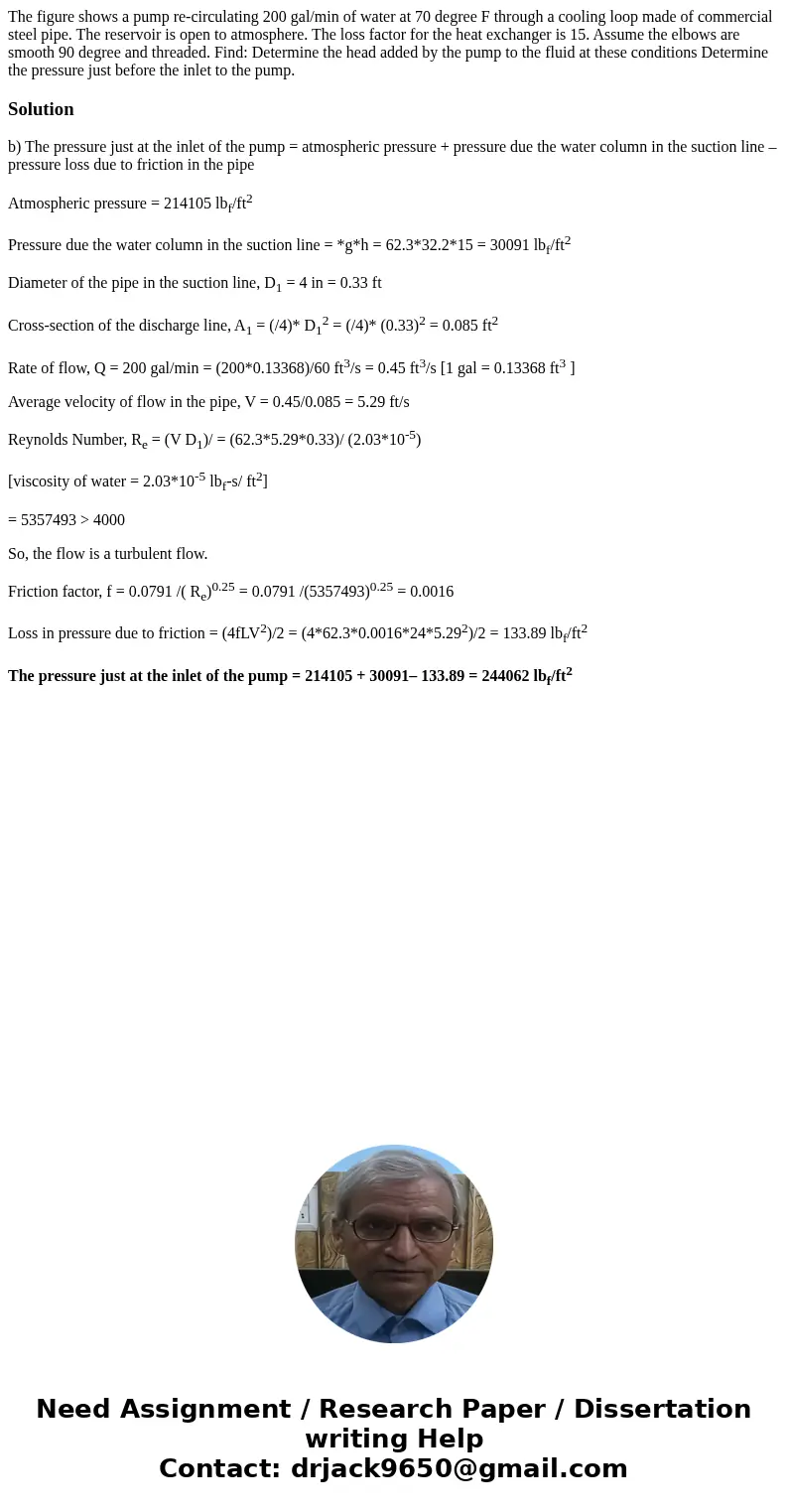The figure shows a pump recirculating 200 galmin of water at
Solution
b) The pressure just at the inlet of the pump = atmospheric pressure + pressure due the water column in the suction line – pressure loss due to friction in the pipe
Atmospheric pressure = 214105 lbf/ft2
Pressure due the water column in the suction line = *g*h = 62.3*32.2*15 = 30091 lbf/ft2
Diameter of the pipe in the suction line, D1 = 4 in = 0.33 ft
Cross-section of the discharge line, A1 = (/4)* D12 = (/4)* (0.33)2 = 0.085 ft2
Rate of flow, Q = 200 gal/min = (200*0.13368)/60 ft3/s = 0.45 ft3/s [1 gal = 0.13368 ft3 ]
Average velocity of flow in the pipe, V = 0.45/0.085 = 5.29 ft/s
Reynolds Number, Re = (V D1)/ = (62.3*5.29*0.33)/ (2.03*10-5)
[viscosity of water = 2.03*10-5 lbf-s/ ft2]
= 5357493 > 4000
So, the flow is a turbulent flow.
Friction factor, f = 0.0791 /( Re)0.25 = 0.0791 /(5357493)0.25 = 0.0016
Loss in pressure due to friction = (4fLV2)/2 = (4*62.3*0.0016*24*5.292)/2 = 133.89 lbf/ft2
The pressure just at the inlet of the pump = 214105 + 30091– 133.89 = 244062 lbf/ft2

 Homework Sourse
Homework Sourse